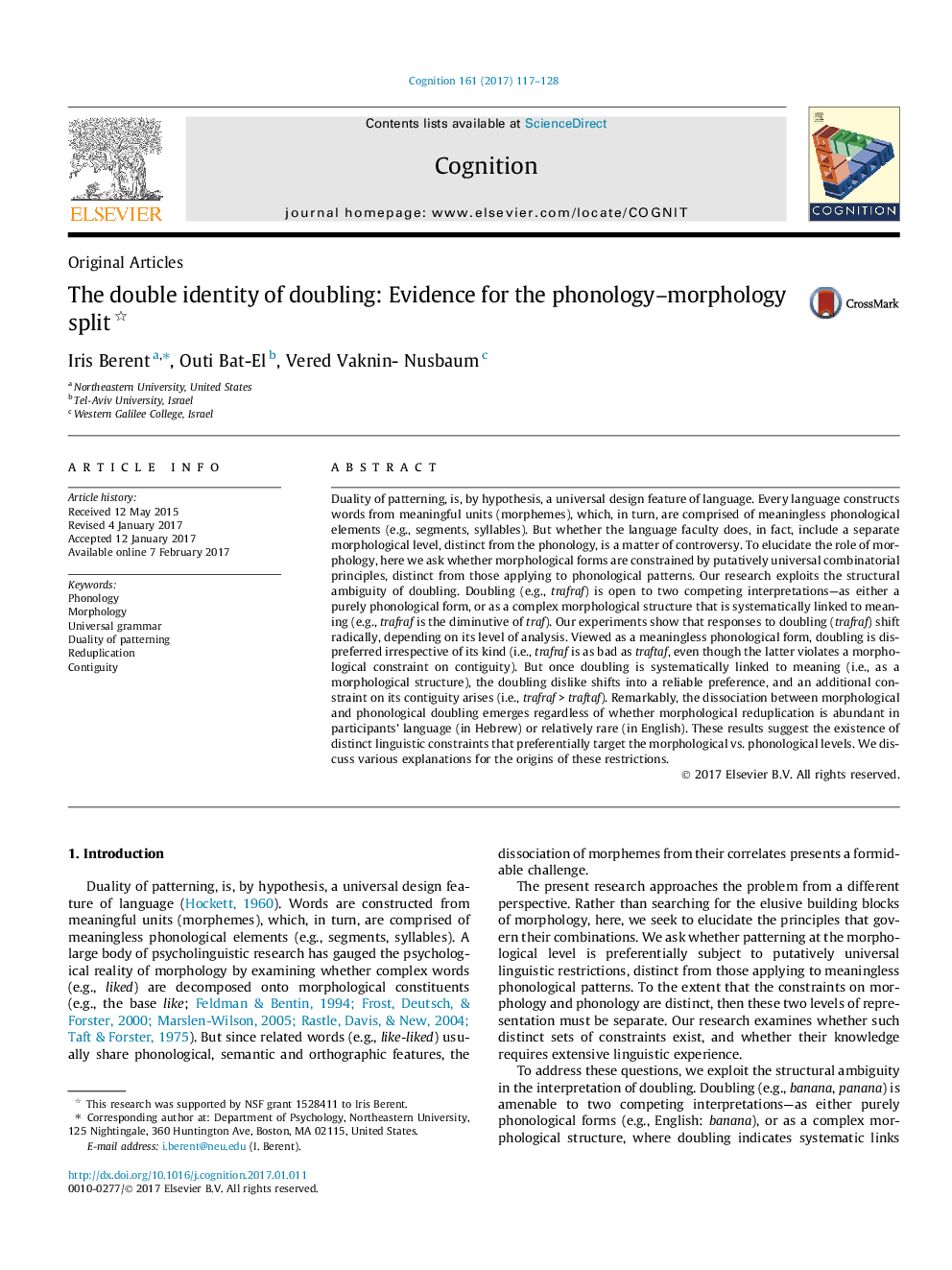| کد مقاله | کد نشریه | سال انتشار | مقاله انگلیسی | نسخه تمام متن |
|---|---|---|---|---|
| 5041527 | 1474106 | 2017 | 12 صفحه PDF | دانلود رایگان |

Duality of patterning, is, by hypothesis, a universal design feature of language. Every language constructs words from meaningful units (morphemes), which, in turn, are comprised of meaningless phonological elements (e.g., segments, syllables). But whether the language faculty does, in fact, include a separate morphological level, distinct from the phonology, is a matter of controversy. To elucidate the role of morphology, here we ask whether morphological forms are constrained by putatively universal combinatorial principles, distinct from those applying to phonological patterns. Our research exploits the structural ambiguity of doubling. Doubling (e.g., trafraf) is open to two competing interpretations-as either a purely phonological form, or as a complex morphological structure that is systematically linked to meaning (e.g., trafraf is the diminutive of traf). Our experiments show that responses to doubling (trafraf) shift radically, depending on its level of analysis. Viewed as a meaningless phonological form, doubling is dispreferred irrespective of its kind (i.e., trafraf is as bad as traftaf, even though the latter violates a morphological constraint on contiguity). But once doubling is systematically linked to meaning (i.e., as a morphological structure), the doubling dislike shifts into a reliable preference, and an additional constraint on its contiguity arises (i.e., trafraf > traftaf). Remarkably, the dissociation between morphological and phonological doubling emerges regardless of whether morphological reduplication is abundant in participants' language (in Hebrew) or relatively rare (in English). These results suggest the existence of distinct linguistic constraints that preferentially target the morphological vs. phonological levels. We discuss various explanations for the origins of these restrictions.
Journal: Cognition - Volume 161, April 2017, Pages 117-128